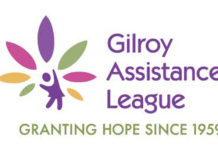It’s garden question-and-answer time again! You may e-mail me questions at ga*******@*ps.net. Or you can mail me questions in care of this newspaper. For a faster, personal response, please include a self-addressed, stamped envelope.
Q: I am from Oklahoma but am visiting a relative in Gilroy. I am very impressed with your garden column and wish we had something like it back in Oklahoma City. Anyway, I was traveling on a dirt road last October in Oklahoma when I came across some red flowers that looked like naked ladies. Are the reds rare? I feel like I found gold.
– M.M., Oklahoma City
A: Congratulations. You’re the first person from Oklahoma to write me a letter. Naked ladies (Amaryllis belladonna) are an old favorite of mine. A column I wrote many years ago for a Web site titled “Naked Ladies” is still my most-read column ever. Last time I checked, it had something like 10,000 hits. I smile every time I think about the surprise most people probably get when they pull up a story about bulbs! The naked lady is so named because it blooms beautiful pink flowers on bare or naked stems before any foliage comes out.
My guess is that you saw red spider lily (Lycoris radiate). Sometimes called Hurricane Lily, it blooms in summer through fall in Oklahoma and Texas, usually after a good soaking rain. What most folks in Oklahoma grow that are similar to our naked ladies is really Lycoris squamigera, also known as “surprise Lily.” It’s pink and also blooms in late summer.
Q: I have a Meyer lemon tree in a half wine barrel. While it has grown and produced well for me, the leaves are turning yellow. What can I do? I don’t want to lose the tree.
– J.S., Morgan Hill
A: Unfortunately, cold weather causes many citrus leaves to turn yellow or, at the very least, light green. Your Meyer lemon is simply in need of iron. You can feed it something like Ironite, which is a powdered form of iron. You can also use any type of chelated iron product. Chelated means the iron is in the form that can be used by the roots and is not susceptible to the fixing that makes the native iron unavailable.
One warning: Be cautious about how much iron you use. It’s better to go lightly and fertilize two or three times in the next few months than to over-fertilize and harm your tree.
At the same time, I must preach about treating yellowing lawns with my favorite cheap fertilizer: sulphate of ammonia. You’ve heard it from me before, but sulphate of ammonia will quickly green lawns that have yellowed because of all our cold, wet weather. It’s cheap in that a 20-pound bag is less than $5. Again, be cautious with sulphate of ammonia because too much could burn your lawn. I never use it during the warm summer months, but it’s great in winter and early spring.













